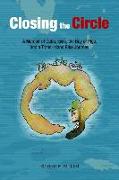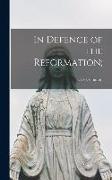- Start
- Closing the Circle: A Memoir of Cuba, Exile, the Bay of Pigs, and a Trans-island Bike Journey
Closing the Circle: A Memoir of Cuba, Exile, the Bay of Pigs, and a Trans-island Bike Journey
Angebote / Angebote:
Closing the Circle: A Memoir of Cuba, Exile, the Bay of Pigs and a Trans-Island Bike Journey is a family memoir in three parts intricately interwoven with historical events. The book is structured in 3 parts, somewhat akin to John McPhee's Coming Into the Country, where each part, though quite separate, complements each other in painting a picture of Alaska. Part I is the saga of the author's immediate family, beginning with his contractor grandfather's involvement under then-President Machado building first the National Theater, then the Carretera Central, Cuba's trans-island highway and Cuba's capitol building, and later the federal prison on the Isle of Youth where both Castro and two of the author's cousins, grunts in the Bay of Pigs invasion, did time eight years apart during the Cuban Missile Crisis-in the very same cell. His grandmother emigrated from the Canary Islands. His father, founding CFO of AIG, introduced VW to Cuba, and he-by chance-rented their first home in Havana to David Atlee Phillips, the CIA operative most responsible for the success of the overthrow of the Arbenz regime in Guatemala in 1954. Phillips was later put in charge of propaganda for the Bay of Pigs operation. The author's mom sparred with Hemingway. They lived next door to the mayor of Havana, a big power broker before the Batista coup of 1952. The family went into exile in 1960, and in 1972 the author planted the Cuban flag atop Mt. McKinley, North America's highest peak. In part II the author broadens the saga to his extended family: It focuses on the story of the Bay of Pigs from the perspective of two cousins, and their subsequent 20 month stint in Cuban prisons, followed by their-and yet another cousin's-exploits during the Kennedy administration's infiltration operations after their repatriation by JFK. One cousin was personally interrogated by Che Guevara after his capture at Playa Girón. This account of the Bay of Pigs is "the grunts' story." Finally, part III is the travelogue of a trans-island bike ride along the road the author's grandfather built, where he returns and connects with his family's memories, one of which was finding his grandmother's grave in the famous Cementerio Colón. The bike route included a detour to the Bay of Pigs area where he was able to physically connect with his cousins' battleground at Playa Larga. The bike ride took place in 2016 when the author led an educational reconnaissance group to Cuba. They stayed at a distant relative's home. The bike group included a variety of political perspectives, which made for lively discussions among the participants and with Cubans. Cuba is hot right now, and with the glacial reform process within the island-given a very slight nudge by Fidel's death-and relations with the US improved but perhaps slowing down, it will remain hot for the foreseeable future. There are many Cuba memoirs and there are many Cuba reportagé books in print, this is one of the few that combines both genres. Eire's Waiting for Snow in Havana, probably the best-known Cuba memoir, is impressionistic verging on the magical realist, while Vidal's Boxing for Cuba is the Cuba memoir that most closely resembles parts of this book. The style is straightforward, conversational and anecdotal, with sometimes outlandish humor.
Folgt in ca. 15 Arbeitstagen


